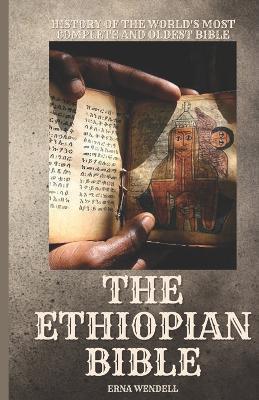The Ethiopian Bible: History of the World's Most Complete and Oldest Bible

The Ethiopian Bible: History of the World's Most Complete and Oldest Bible
Throughout the centuries, Ethiopia has maintained a deep and abiding faith in Christianity. This faith is rooted in the Ethiopian Bible, a translation of the Bible into the Ge'ez language, the liturgical language of the Ethiopian Orthodox Church. The Ethiopian Bible has a long and storied history that has been passed down through the generations.
The earliest evidence of Christianity in Ethiopia dates back to the 4th century, when the Ethiopian king Ezana converted to Christianity. This conversion was followed by a period of growth in Christianity throughout the region. During this period, the early Church fathers translated the Bible into the Ge'ez language, allowing the Ethiopian people to read and study the Bible in their own language.
The translation of the Bible was not completed until the 8th century, when the monk Abba Pantaleon completed the translation from Greek into Ge'ez. The Bible was then divided into two books - the larger book, known as the Kebra Nagast, contains the Old Testament, and the smaller book, known as the Fetha Nagast, contains the New Testament.
The Ethiopian Bible has gone through several revisions over the centuries. In 1630, the Bible was revised for the first time in over 500 years. This revision was undertaken by the scholar Abba Bahrey, who was tasked by the Emperor Yohannes I with updating the translation. Abba Bahrey's revision was the first major revision of the Bible since its original translation, and it helped to bring the Bible up to date with modern language and understanding.
The Ethiopian Bible has played an important role in the history of Ethiopia and its people. It has been a source of guidance and comfort for generations of Ethiopians, and it remains a vital part of their spiritual and cultural identity. The Ethiopian Bible has been an integral part of Ethiopian culture for centuries, and it continues to be a source of strength and inspiration for the Ethiopian people.
PRP: 85.17 Lei
Acesta este Pretul Recomandat de Producator. Pretul de vanzare al produsului este afisat mai jos.
76.65Lei
76.65Lei
85.17 LeiLivrare in 2-4 saptamani
Descrierea produsului
Throughout the centuries, Ethiopia has maintained a deep and abiding faith in Christianity. This faith is rooted in the Ethiopian Bible, a translation of the Bible into the Ge'ez language, the liturgical language of the Ethiopian Orthodox Church. The Ethiopian Bible has a long and storied history that has been passed down through the generations.
The earliest evidence of Christianity in Ethiopia dates back to the 4th century, when the Ethiopian king Ezana converted to Christianity. This conversion was followed by a period of growth in Christianity throughout the region. During this period, the early Church fathers translated the Bible into the Ge'ez language, allowing the Ethiopian people to read and study the Bible in their own language.
The translation of the Bible was not completed until the 8th century, when the monk Abba Pantaleon completed the translation from Greek into Ge'ez. The Bible was then divided into two books - the larger book, known as the Kebra Nagast, contains the Old Testament, and the smaller book, known as the Fetha Nagast, contains the New Testament.
The Ethiopian Bible has gone through several revisions over the centuries. In 1630, the Bible was revised for the first time in over 500 years. This revision was undertaken by the scholar Abba Bahrey, who was tasked by the Emperor Yohannes I with updating the translation. Abba Bahrey's revision was the first major revision of the Bible since its original translation, and it helped to bring the Bible up to date with modern language and understanding.
The Ethiopian Bible has played an important role in the history of Ethiopia and its people. It has been a source of guidance and comfort for generations of Ethiopians, and it remains a vital part of their spiritual and cultural identity. The Ethiopian Bible has been an integral part of Ethiopian culture for centuries, and it continues to be a source of strength and inspiration for the Ethiopian people.
Detaliile produsului








